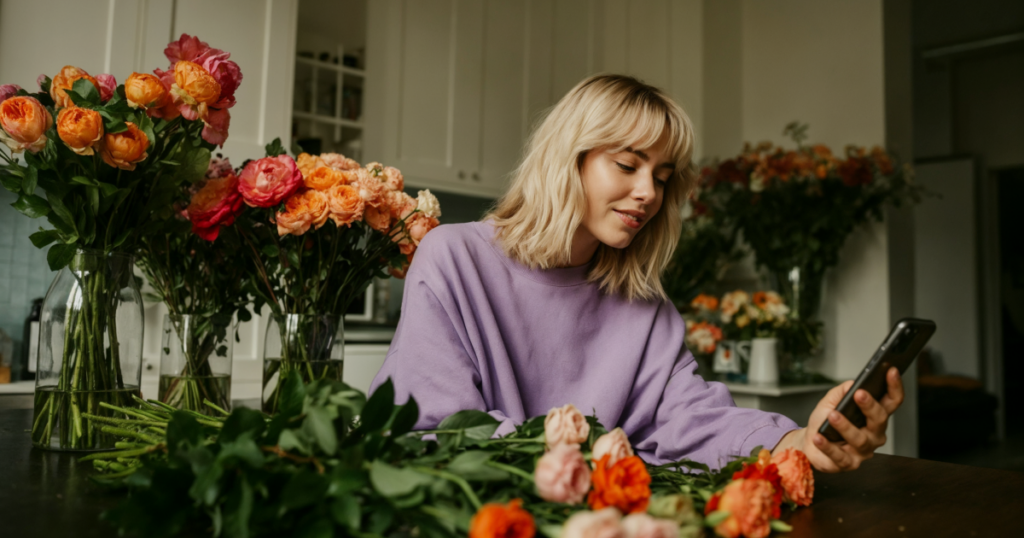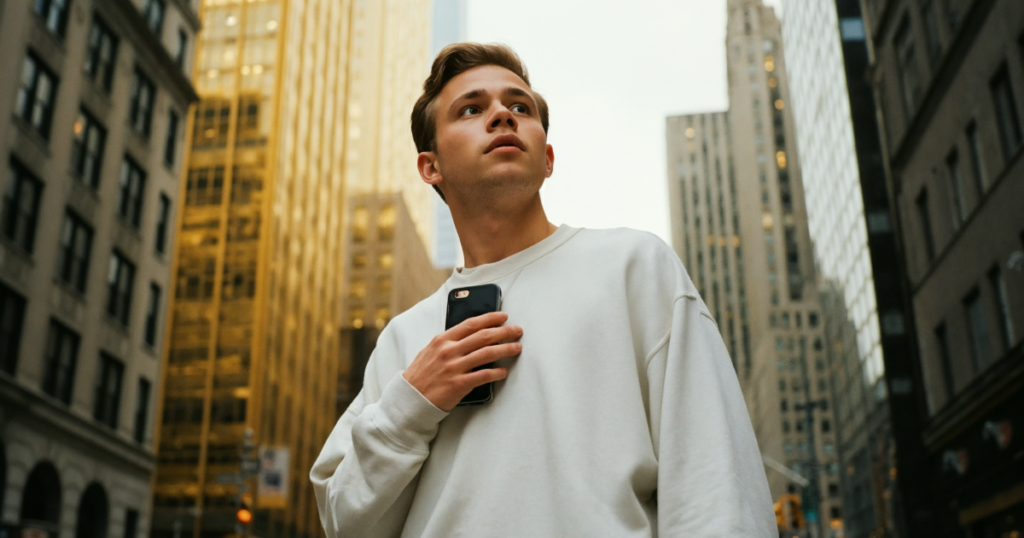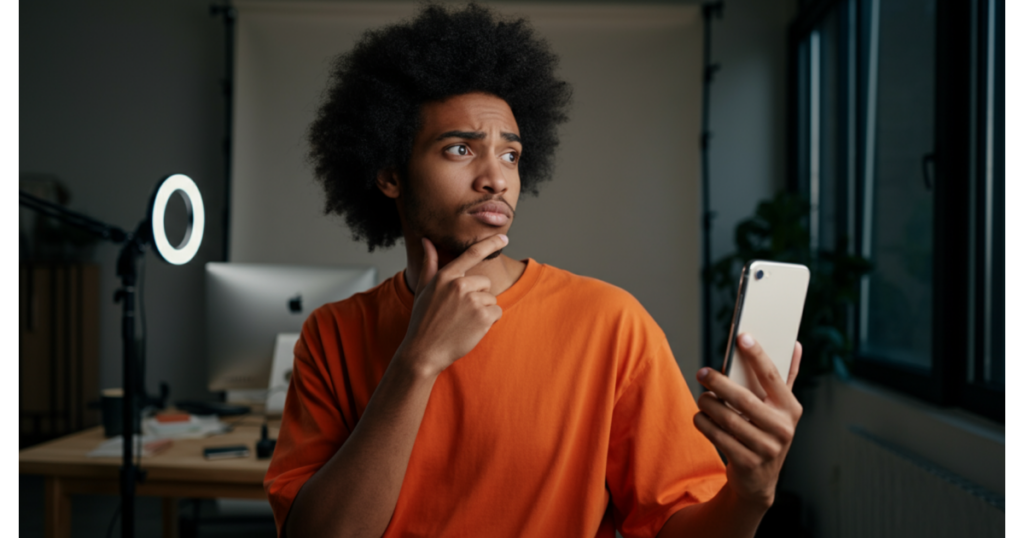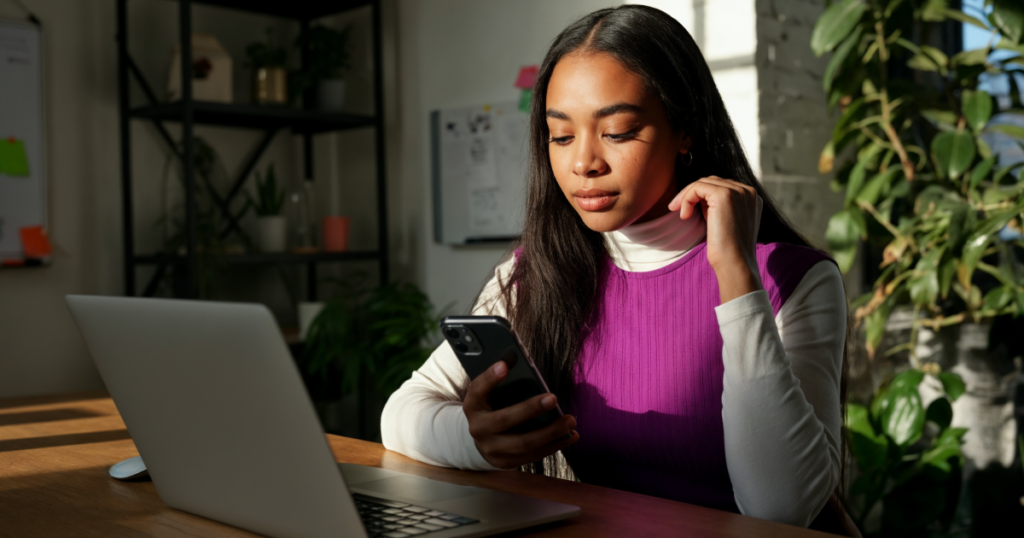TikTok is full of creators securing brand deals, raking in sponsorships, and turning their content into a career. And if you’ve ever thought, “that could never be me,” I’m here to tell you, yes, it absolutely CAN.
Contrary to what you might think, you don’t need millions of followers or viral videos to start working with brands. What you do need? A clear niche, engaged audience, and the confidence to pitch yourself. Brands seek content creators who can authentically connect with their audience — including small creators like you.
This guide will walk you through nailing down your niche, knowing when you’re ready, pitching your first brand, and spotting the best deals. If you’ve been creating consistently and building a community, you’re closer to landing your first paid partnership than you think.
Now let’s get you that first brand deal.
Finding Your Niche (Because “Posting About Everything” Won’t Get You Paid)

If your TikTok bio says “I post whatever I feel like” — we’ve got a small problem. Brands aren’t looking for creators who dabble in everything; they’re looking for specialists who speak directly to a specific audience.
That doesn’t mean you have to lock yourself into one topic forever. It just means you need a consistent theme that makes your content instantly recognizable. Think of it like this: If a skincare brand is looking for a partner, they’re more likely to work with someone who regularly shares beauty tips, product reviews, and skin-care routines than a creator who alternates between posting memes, dance trends, get-ready-with-me (GRWM), and pet videos.
How to define your “thing” (even when you feel too broad)
Still figuring out what makes you stand out? Think about this:
- First things first: Do you have the right account type for what you want to do? There are pros and cons to a Business Account vs. Creator Account.
- What do you love creating the most? The best niche is one you enjoy making content about.
- What questions do people always ask you? If you get comments like, “Where did you get that?” or “Can you show us how to do this?” that’s a clue.
- What do you naturally talk about all the time? If you find yourself constantly sharing life hacks, fitness tips, or book recommendations, that’s a solid direction.
- What brands align with your interests? If you already rave about a particular product, service, or lifestyle, that’s a sign you’re in the right space.
Small creators CAN land deals
You don’t need 100K+ followers to get noticed. Micro and nano influencers (those with 1K–50K followers) often have higher engagement rates than massive accounts. Advertisers know that.
Brands care more about authenticity and audience trust than just numbers.
Examples of niches that can land partnerships:
- A creator who reviews budget-friendly Amazon fashion finds scores a deal with an affordable clothing brand.
- Someone posting cozy book nook setups lands a collab with a candle company.
- A creator making daily productivity tips gets sponsored by a digital planner brand.
See the pattern? It’s not about size; it’s about fit. Once you define your niche, brands will see you as the go-to creator in that space. And that? That’s when the paid opportunities roll in.
When are you Ready to Monetize?

If you’re waiting for some magical moment when a brand slides into your DMs and says, “We’ve been waiting for you!” it’s time to rethink that strategy.
Many creators hold back from monetizing because they assume they need massive numbers, viral videos, or a blue checkmark. Spoiler: You don’t.
Here’s how to know if you’re ready to start landing brand deals
Three signs you’re prepared for partnerships:
- You’ve built a consistent posting routine: Brands want creators who show up regularly; not just when inspiration strikes. If you’re posting consistently (even just 2–3 times per week), you’re already ahead of most.
- Your audience engages with your content: You don’t need millions of followers but people who care about what you post. Brands will see value if your videos spark comments, shares, and conversations.
- You’ve naturally recommended products before: If you’ve ever posted, “You guys NEED to try this” and people did — guess what? That’s influencer marketing in action.
The bottom line: If your audience trusts your recommendations, you’re ready to work with brands.
“I don’t have a big audience!” → Why micro-influencers are winning
The era of chasing millions of followers is over. Brands now prefer micro-influencers (10K–50K followers) and even nano-influencers (under 10K) because their audiences are highly engaged.
Think about it:
- Would a small skincare brand rather work with a celebrity who posts about their product once and forgets it…
- …or with a micro-influencer who loves skincare, answers DMs, and actively recommends their product?
They’ll often choose the creator with stronger audience trust — even with fewer followers. A smaller, loyal following = more sales in the long run than a huge one that’s barely paying attention.
What makes your account attractive to advertisers right now
If you’re wondering, “Why would a brand work with me?” here’s what they’re looking for:




Bottom line? You don’t need to “wait” to monetize. If your audience listens when you talk, engages when you post, and trusts your recommendations, you’re already positioned to start landing partnerships.
HOW to Find Your First Brand Partner

So, you’re ready to land your first brand deal — but where do you start? It’s not about spamming random companies with “Hey, wanna collab?” DMs. Instead, think of this like dating: Start with brands that already make sense for you, and let the best partnerships grow naturally.
The “warm lead” approach: Work with brands you already love
Your best first brand deal? Something you already use and rave about. Think about the products you’ve mentioned in passing, recommended to friends, or would never go without.



If you already talk about a brand without being paid, you’re in the perfect position to pitch them. Companies love working with creators who are already fans because the partnership feels authentic, not forced.
Pro tip: Before reaching out, start engaging with the brand on TikTok and Instagram. Comment on their posts, tag them in your content, and show them you’re a genuine supporter. You won’t be a stranger in their inbox when you finally pitch.
Reverse engineer your ideal collab by checking what brands want
Instead of wondering, “Would they work with me?” flip the script. Look at what brands are already doing with other creators.
Here’s how to do it:
- Find brands in your niche that sponsor similar creators (search TikTok for terms like #ad + your niche).
- Check their partnerships: What types of videos do they sponsor? Are they working with creators at your level?
- Look at their website: Many brands have ambassador programs or “Work With Us” pages that openly invite creators to collaborate.
- Follow them on LinkedIn and TikTok: Many companies announce creator campaigns before they open applications.
When you know what brands are looking for, you can craft a pitch that speaks directly to their needs. (We’ll get to that next!)
Why your first deal might already be in your inbox
Surprise! You might have already gotten approached for a brand deal and didn’t realize it.
Many companies reach out to creators through DMs and emails, but these messages often get ignored because they look like spam.
Here’s what to check:


If you find an opportunity, do your homework. Research the brand, ensure they align with your content, and that the deal is worth your time. (And don’t worry, we’ll cover red flags soon.)
TL;DR: Your first brand deal doesn’t have to be a cold pitch to a random company. Start with brands you already love, research what companies are looking for, and check your inbox — you might already have an opportunity waiting.
Pitching 101: How to Reach out Without Sounding Cringe

So you’ve found a brand you’d love to work with. Now comes the part that makes most creators break into a cold sweat — actually reaching out. But don’t stress. Pitching a brand deal isn’t about “selling yourself” like a desperate door-to-door salesman. It’s about showing a company why a collab with you makes sense.
Let’s talk about how to slide into their inbox with confidence, not cringe.
The perfect first DM or email to a brand
When pitching, short and sweet wins. Brands get tons of messages from creators, so the key is to:




Where to send your pitch: Some brands prefer DMs, while others handle collabs via email. Check their TikTok bio for instructions; some companies have dedicated influencer inquiry emails.
What NOT to say when pitching (and what works)
A handy list of do and don’t examples to work from.






The goal is to position yourself as a valuable partner, not just someone looking for free products.
Customizable pitch template for first-time brand deals
Start with this and make it your own.
Subject: Collaboration opportunity – TikTok partnership with [Your Name]
Hey [Brand Name] team,
My name is [Your Name], and I create content focused on [your niche] on TikTok. I’ve been a longtime fan of [specific product or service] and recently featured it in my content, where my audience really responded to it.
I’d love to explore a partnership where I can authentically showcase [Brand Name] in a way that connects with my audience and highlights what makes your brand stand out.
Would you be open to discussing collaboration opportunities? I’d be happy to share ideas and insights on how my audience aligns with your brand’s goals.
Looking forward to your thoughts!
Best,
[Your Name]
[Your Email]
[Your Social Media Links]
Pro tip: If you don’t get a response, follow up in about a week. Keep it short and polite: “Hey [Brand Name], just checking in to see if you had a chance to review my last message. I’d love to chat about potential ways to collaborate!” After that, it’s up to them, honestly.
Remember, it’s unrealistic for every brand you approach to be interested in moving forward (or even responding). There’s no industry standard, but you should feel proud if you get a response rate over 10%! But it also means that you have to identify multiple options and keep trying when looking for your first brand deal.
TL;DR: Your first pitch doesn’t have to be scary. Be professional, show enthusiasm, and clarify why working together makes sense. Now shoot your shot!
Red Flags vs. Green Flags: Spotting the Right Brand Deals

Not all brand deals are created equally. Some opportunities will boost your career, pay you fairly, and respect your creative vision — while others? Straight-up scams, time-wasters, or deals designed to exploit small creators.
The key is knowing how to spot the red flags and run vs. recognizing a green flag opportunity and leaning in.
Red flags: Warning signs of a bad brand deal
Here’s what you should avoid.













If they want extra deliverables, the price needs to reflect that. You can tell them professionally that you’re happy to renegotiate the terms and redo the work after the new contract is signed.

Ever have a brand DM you like “Hey, we need a TikTok posted by tomorrow. Can you do it?”

If they won’t give you time to:


That’s not your brand deal; that’s a grifter. A good partnership allows time for creativity, planning, and communication.
Green flags: Signs of a great brand deal
Now that we’ve covered what to avoid, let’s discuss what makes a brand partnership worth it.




- Your rate (and open to negotiation).
- When you’ll get paid (and follow through).
- What they expect, and what you’ll deliver.


- Give you reasonable deadlines so you can create great content.
- Be clear about their expectations (no last-minute “surprise” requests).
- Have a real point of contact (not just a random intern managing DMs).
- They respect your audience + don’t ask for fake engagement.
Remember:

If a company asks you to pad the numbers (or post misleading content), they don’t care about your integrity — they just want clicks.

Remember:
- You are not “lucky” to be offered a collab.
- You don’t owe any brand free work.
- If a company values your content, they will compensate you.
Final thought: Know your worth, trust your gut
Brand deals should feel exciting, not exhausting. If something feels sketchy, walk away. If a company respects your work, you’ll feel that too.
Your first brand partnership should be something you’re proud of, not something you regret. So keep an eye out for green flags, and never feel pressured to accept a deal that doesn’t feel right.
You’ve Landed Your First Deal; Now What!?

Securing your first brand partnership is a huge milestone, but if you play it right, it doesn’t have to be a one-and-done situation (a common rookie move). The best creators turn one brand deal into many, building long-term collaborations that pay better, offer more creative freedom, and make monetization sustainable.
So how do you keep the momentum going? Let’s talk follow-ups, repeat partnerships, and leveling up after your first paid collab.
Keep the door open: The follow-up message that keeps brands coming back
A brand partnership isn’t over just because the campaign ends. If you nailed the collaboration, brought in great engagement, and enjoyed working with the brand, there’s a huge opportunity to turn a single deal into a longer-term relationship.
Here’s how to keep the door open and set yourself up for future partnerships:
- Follow up after the campaign: Send a thoughtful message thanking them for the opportunity.
- Example message: “Hey [brand rep’s name], I just wanted to say thank you for such a great collab! My audience resonated with [specific part of the campaign], and I loved working with your team. If you have future campaigns that align with my content, I’d love to chat about how we can collaborate again!”
- Why this works: It shows gratitude, highlights what worked, and clarifies that you’re open to future projects.
How to turn one partnership into many
Brands love creators who deliver results. If you show them that partnering with you is a smart investment, they’ll keep coming back.
Here’s how to increase your chances of getting rehired:


- Engagement stats (likes, comments, shares, saves)
- Audience feedback (screenshots of positive comments)
- Click-through rates or sales (if you have affiliate links or trackable data)
Even if the numbers feel low, remember that they weren’t expecting 1 million likes when partnering with a more niche or newer creator!
If the campaign performed well, you’ve got proof that working with you is worth it.
How to pitch an ongoing partnership
Brands don’t just want one viral post; they want consistent visibility with your audience. If you enjoyed the collaboration and think it fits your brand, suggest a longer-term partnership.
How to pitch it: “I loved working on this campaign, and based on my audience’s response, I think an ongoing partnership could bring even more value. Would you be open to discussing a longer-term collaboration, such as a monthly feature or a product series?”
Why this works: It positions you as a strategic partner, not just a one-time influencer.
Staying on their radar
Even if a brand isn’t ready for another collab immediately, keep the relationship warm:
- Engage with their content (comment on their TikToks, share relevant posts).
- Check in every few months (send a message like “Hey, I saw your latest campaign; it looks amazing! Let me know if you’re looking for creators for upcoming projects.”).
- Stay professional and patient (sometimes brands plan months in advance, so keep the connection alive).
You did it! Now what? (Next steps to grow paid partnerships)
Now that you’ve landed one brand deal, getting the next one is easier. You have proof that brands trust you, and you can use that momentum to attract bigger and better opportunities.




Landing a paid brand deal means you’ve officially stepped into influencer marketing and you BELONG here. It’s not luck, it’s strategy. If you keep delivering great content, nurturing brand relationships, and staying consistent, this is just the start of many more partnerships.
You’re Ready. Now Get That First Deal!

If you’ve made it this far, one thing is clear: you’re more ready for brand partnerships than you think. You don’t need a million followers, a viral video, or some elusive “it factor” to get paid. What brands actually want? Creators who know their audience, create great content and bring value.
By finding your niche, recognizing your worth, and confidently approaching partnerships, you’re already ahead of most people who never even try. And if you take just one step today (whether it’s refining your content strategy, reaching out to a brand, or simply believing that you deserve to get paid), you’re on your way.
The first deal is always the hardest, but once you land it, the next one gets easier. Brands talk, campaigns lead to more significant opportunities, and before you know it, you’re not just a creator — you’re a paid creator.
So take that next step. Your dream collab isn’t out of reach, it’s out there waiting for you to make the first move.
And once you have so many messages you can’t possibly handle them all? Manychat’s TikTok automations are here to help.